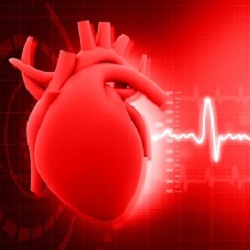
ISBN# 978-1-935746-64-5
Course Description:
This course builds on fundamental exercise physiology to allow the health-fitness professional to take exercise to the next level. Learn how to deliver precision exercise prescription in group fitness, small group fitness, personal training, and boutique/studio fitness applications. The information in this course will change the way you view and deliver exercise programming.
Reinforce basic physiology with quick reviews and apply current physiology and technology for zone, threshold, and heart rate training. Understand the science behind the technology of wearable devices to be able to better apply heart rate training to fill your client's needs and meet their goals. Step into the realm of precision exercise to learn how to deliver a high level of service for all your clients in all fitness applications.
Education Level: Advanced
Prerequisites: Personal Training or Group Fitness Certification Minimum
Successful completion of the quiz is necessary to receive Continuing Education Credit.
Approved for:
| 6.0 | American College of Sports Medicine (ACSM) |
| 0.6 | Aquatic Therapy & Rehabilitation Institute (ATRI) |
| 0.6 | International Accreditors for Continuing Education and Training (IACET) |
| 0.6 | National Association for Fitness Certification (NAFC) |
| 0.6 | National Council on Strength & Fitness (NCSF) |
| 6.0 | National Strength Professionals Association (NSPA) |
| 6.0 | YMCA |
Course Objectives:
After completing this course you will be able to:
- Define and explain homeostasis and allostasis as it relates to a resting and exercising body.
- Discuss the body's response and adaptation to exercise training including chronic and acute adaption and the physiological principles.
- Identify the guidelines for exercise including cardiorespiratory endurance, resistance, flexibility, and neuromotor exercise.
- Explain how to monitor acute exercise variables including frequency, intensity, duration, and mode of exercise.
- Identify 5 aspects of aging, exercise age, and how it affects exercise response.
- Define exercise tolerance and adherence and explain three methods to help a client with tolerance and adherence difficulties.
- Describe 3 exercise components related to heart rate and threshold physiology.
- Discuss the importance of dose-response relationship and individual response to exercise.
- Describe the various aspects of heart rate variability.
- Explain the 5 stages related to outcome based heart rate training.
- Describe the role determining heart rate zones plays in exercise testing and 5 heart rate methods.
- Discuss the role of rate of perceived exertion and the talk test in outcome based heart rate training.
- Describe the role genetics plays in exercise training identifying 5 basic genetic terms.
- Discuss the history of heart rate monitors.
- Explain zone, threshold, and heart rate training methods including proper use, advantages, and applications for use.
- Discuss heart rate training applications for resistance and flexibility training.
- Describe methodology and features of wearable devices.
- Discuss client considerations for outcome based heart rate training.
- Recognize and explain 4 types of training programs that are used in outcome based programming.
System Requirements to View This Course
This course is tablet enabled and can be viewed on an iPad or Android tablet as well as a PC or MAC Computer
